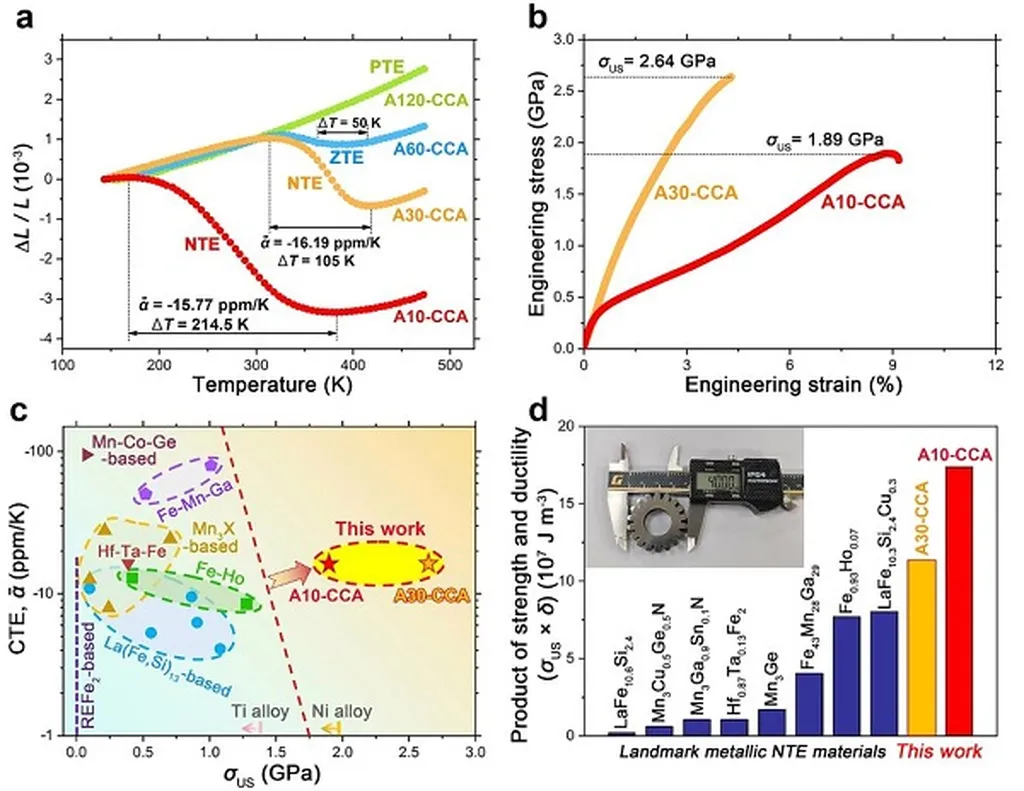In the quest to enhance the durability of aluminum alloys, a team of researchers led by Xin Xu from the Laboratory of Advanced Light Alloy Materials and Devices at Yantai Nanshan University and Yangzhou University has uncovered a crucial mechanism that could revolutionize the energy sector. Their findings, published in *Materials Research Express* (which translates to *Materials Research Express* in English), shed light on the enigmatic optically dark areas (ODAs) that often precede premature failure in Al-Cu-Mg alloys, a material widely used in various industries, including energy.
The study, titled “Thermal diffusion dominates Cu enrichment in optically dark areas of Al-Cu-Mg alloys: mechanistic insights for fatigue resistance enhancement,” delves into the long-standing debate over whether mechanical friction or thermal diffusion is the primary driver behind copper (Cu) enrichment in ODAs. The team employed a combination of mechanical fragmentation through ball milling and high-temperature annealing to simulate different conditions.
“Our experiments revealed that mechanical friction alone, induced by ball milling, did not significantly contribute to Cu segregation,” explains lead author Xin Xu. “However, when we subjected the alloys to thermal exposure, we observed a marked diffusion and enrichment of Cu on the surface.”
The team’s experiments showed that thermal exposure, particularly in a nitrogen environment, led to a higher coverage of Cu-rich phases and stronger light absorption due to the dominance of metallic Cu. In contrast, exposure to air resulted in the formation of CuO, which had different properties. These findings were confirmed through X-ray diffraction (XRD) and differential scanning calorimetry (DSC) analyses.
The implications of this research are profound for the energy sector, where Al-Cu-Mg alloys are often used in critical components that must withstand high stress and fatigue. By understanding and controlling the Cu segregation process, engineers can potentially enhance the fatigue resistance of these alloys, leading to more durable and reliable energy infrastructure.
“This mechanistic insight provides a pathway to enhance fatigue resistance in Al-Cu-Mg alloys by controlling Cu segregation during service,” Xu notes. “This could have significant commercial impacts, particularly in industries where the longevity and reliability of materials are paramount.”
The study’s findings not only clarify the mechanism behind Cu enrichment in ODAs but also open new avenues for research and development in materials science. As the energy sector continues to evolve, the demand for advanced materials that can withstand extreme conditions will only grow. This research offers a promising direction for future developments in the field.
In the words of Xin Xu, “Understanding the fundamental mechanisms that govern material behavior is the first step towards innovation. Our hope is that this research will inspire further exploration and lead to the development of next-generation materials that can meet the challenges of tomorrow’s energy landscape.”

